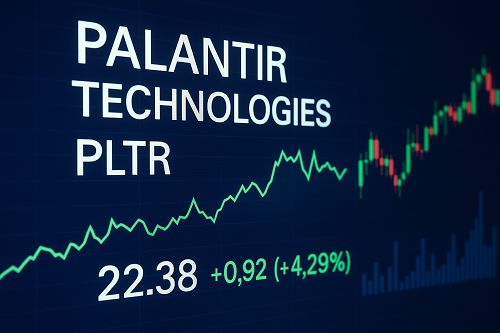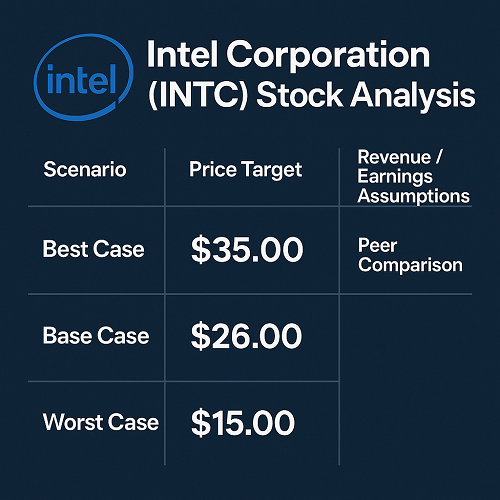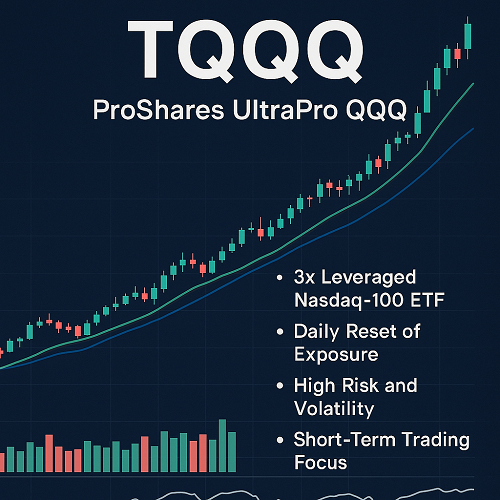Palantir Technologies is a software company specialising in large-scale data integration, analytics and AI applications — originally for government/defence, and increasingly for commercial customers. With the explosion of interest in AI, data infrastructure and analytics, Palantir is well-positioned to capitalise. Investors often keep an eye on the PLTR premarket activity as indicators of potential performance shifts. In Q2 2025 the company delivered strong growth, raised guidance and continues to win major contracts.
However, significant risks remain: dependency on government/defence spending, high valuation expectations, potential competitive threats, and execution risk. For investors, Palantir offers an interesting mix of high-growth opportunity and high risk. The following sections unpack all of this in detail.
Company overview & history
Palantir was founded in 2003 by a team including Peter Thiel, Alex Karp and others.
Originally the company’s systems were built for intelligence/defence-use (data from many sources, integrated, analysed) — e.g., for the U.S. intelligence community.
Over time Palantir expanded into commercial markets and broadened its product portfolio. Today its key products include platforms such as Foundry (commercial data analytics), Gotham (government/defence) and more recently an Artificial Intelligence Platform (AIP) offering.
The company went public in September 2020.
Headquarters are in Denver, Colorado.
Business model & product portfolio
Business segments
Palantir broadly splits its business into two segments:
- Government/Defence: Contracts with federal, state, local governments and defence agencies.
- Commercial: Private-sector customers across industries (energy, manufacturing, healthcare, etc).
Key products
- Foundry: A data-integration and analytics platform serving commercial and non-defence customers.
- Gotham: Designed for government intelligence/defence agencies to integrate, secure and analyse data.
- Apollo: A deployment & operations platform enabling software delivery across environments.
- AIP (Artificial Intelligence Platform): The most recent offering that embeds large-language-models (LLMs) and AI applications tied to customer data, promising “AI-leverage” across enterprise/government use-cases.
How it makes money
Revenue is generated via software contracts (often multi-year), services, and deployment/integration. The government side tends to be high-value contracts, sometimes with long lead-times; the commercial side is more competitive but with higher growth potential. The company aims to cross-sell products, grow existing customer spend (land-and-expand) and leverage AI/analytics tailwinds.
Market positioning & competitive landscape
Why Palantir stands out
- Strong legacy in government/defence analytics — gives it credibility and “sticky” contracts.
- Early mover in enterprise data-analytics platforms, now pushing into AI-enabled applications.
- Growing commercial business which brings higher growth potential.
- Rising demand for AI/data infrastructure across both private and public sectors — Palantir is favourably positioned.
Competitive threats
- Large incumbent enterprise software firms (e.g., Microsoft Corporation, Oracle Corporation, SAP SE) and emerging pure-play AI/data firms.
- Defence & intelligence contractors expanding their software/AI capabilities may eat into Palantir’s domain.
- Commercial customers may adopt open-source or cheaper analytics/AI platforms (e.g., open-source LLMs).
- Government budgets and procurement cycles are inherently uncertain.
- Execution: scaling commercial business, maintaining margins, cross-selling new products.
Market size & trends
- Global enterprise AI software market and data-analytics market are growing rapidly.
- Government defence/intel spending on AI, data, analytics remains a structural tailwind.
- Palantir ticked both boxes: AI + data + government/commercial.
- In 2025, many analysts highlight Palantir as a beneficiary of the “AI trade”.
Financial performance & recent results
Recent performance
In Q2 2025 (ended June 30), Palantir reported:
- Revenue growth of ~48 % y/y and U.S. commercial revenue growth ~93 % y/y.
- The company raised full-year 2025 guidance to ~45% revenue growth, and U.S. commercial revenue guidance to ~85% y/y.
- Earnings beat: According to one report revenue was ~$1.00 billion and EPS ~$0.16, exceeding expectations.
Historical context
- According to historical data: Revenue in 2024 was ~$2.9 billion with earnings of ~$462 million.
- The company has been shifting from loss-making or marginal profit to a more solid profit footing (though margin pressures remain).
Key financial metrics and metrics to watch
- “Rule of 40” (growth + margin) is often used for software companies — analysts note Palantir’s score is strong.
- Growth of commercial (non-government) revenue is a key metric — higher commerce = higher margin, less reliance on government.
- Customer retention / expansion metrics (land-and-expand) — how many large customers, their annualised contract value (ACV).
- Gross margin and operating margin trends — as the company scales, margin should improve.
- Guidance: forward growth expectations and the credibility of raising guidance.
- Cash flow generation, capital spending, and dependencies on large contracts.
Growth drivers in 2025
AI leverage
Palantir itself says it is seeing “astonishing impact of AI leverage”.
As enterprises and governments adopt AI, Palantir’s data-platforms and analytics tools are well suited. The AIP product and related offerings are positioned for this trend.
Commercial expansion
The jump in U.S. commercial growth (~93% in Q2) shows that Palantir is gaining momentum outside government. This is critical for scaling and margin improvement.
Large government/defence contracts
While commercial business gets the headlines, the government business remains a foundational pillar (and often less volatile). Deals with the U.S. government or allies provide large contracts and credibility. For example: the company is noted to be moving deeper into defence/AI-software in 2025.
Strategic partnerships & vertical expansion
Palantir is working in specialised verticals — e.g., infrastructure, energy, manufacturing — areas where its platforms can deliver strong value. Expansion into new geographies and sectors helps diversify. (For example: nuclear power infrastructure application)
Cross-sell and higher customer spend
As customers onboard Palantir’s platform, the potential to sell additional modules and increase annual spend is significant. The business model supports recurring revenue and contract renewals.
Key risks and headwinds
Government budget risk
Because a meaningful portion of Palantir’s revenue comes from government contracts, cuts or slower procurement cycles can hurt. For example: news that the U.S. Pentagon was planning budget cuts caused a drop in Palantir’s stock.
Valuation expectations
Given the strong growth and bullish narrative, the stock is priced for high expectations. If growth slows, misses occur or guidance weakens, the valuation risk is significant.
Competition & commoditisation
Data analytics and AI platforms are increasingly crowded. As tools like open-source LLMs proliferate, and as big tech invests heavily, Palantir must continuously innovate and differentiate.
Execution risk
Scaling commercial operations is different from government contracts. Issues: sales cycles, onboarding complexity, margin pressure. If Palantir fails to execute, growth or margin may falter.
Concentration risk
Large contracts may dominate revenue; the loss or non-renewal of a key customer can have outsized impact. Also, reliance on U.S. government and a handful of large commercial clients can be a vulnerability.
Regulatory, reputational & ethical risk
Given Palantir’s involvement in defence, intelligence and data-analytics, it faces reputational risk, privacy/surveillance criticism and regulatory scrutiny. These could impact contracts or lead to higher costs.
Valuation considerations
From a valuation standpoint:
- The growth rate (~45–50% for 2025 guidance) is high for a software company of Palantir’s size.
- The company’s transition from primarily government to growing commercial business suggests margin expansion potential.
- But high growth expectations imply limited margin for error.
- Metrics to evaluate: forward P/E, PEG (price/earnings to growth) ratio, enterprise value / revenue, free cash flow yield, recurring revenue proportion.
- Given risk factors, some analysts may assign a premium if Palantir can sustain its growth trajectory; others may argue valuation is stretched if execution stumbles.
Investment thesis: pros & cons
Why you might buy PLTR
- Exposure to the AI/data infrastructure megatrend via a company with strong government & enterprise credentials.
- Rapid growth, especially in commercial segment, with recent guidance increases and strong earnings beats.
- Large addressable market and opportunity to cross-sell, expand into new verticals/geographies.
- Sticky contracts, long-term customer engagements, high switching cost for clients once adopted.
Why you might be cautious
- High valuation means significant execution risk; a miss could lead to sharp downside.
- Heavy reliance on government/defence spending and large contracts makes business somewhat lumpy.
- Competitive landscape intensifying; margin pressure remains a risk.
- Reputational/regulatory issues given nature of some of Palantir’s clients and contracts.
Outlook & what to watch
Key upcoming milestones to monitor
- Q3 2025 earnings: whether growth guidance holds and whether commercial growth remains strong.
- Contract wins: new major government or commercial deals (size, scope, sector).
- Margin expansion: gross margin and operating margin trends.
- Customer metrics: incremental annual contract value (ACV), retention/renewals, number of large customers.
- Product adoption: especially how AIP (AI platform) is gaining traction and contributing to revenue.
- Macro/government spending: defence budget trends, AI spending by enterprises, global tech investment.
- Stock valuation: how investors treat growth vs risk balance; changes in analyst sentiment.
Medium-term potential
If Palantir executes well: we may see strong growth for several years, commercial business eventually overshadowing government business, margin improvement and perhaps a re-rating. If growth slows or execution falters: the high valuation could lead to significant downside.
Conclusion
Palantir Technologies (PLTR) is a compelling but risky investment. It occupies a unique intersection of data analytics, AI and government/enterprise software — a position that offers high upside if the company can continue to execute its growth strategy, scale commercial business and expand margins. The recent earnings beat and guidance raise are encouraging signs.
However, the stakes are high: competition, budgeting uncertainty, high expectations and execution demands mean that any misstep could lead to disappointment. For long-term investors with a bullish view on AI and enterprise/government software, Palantir is worth close consideration — but it demands a tolerance for volatility and risk.
In summary: buy if you believe in the AI/data infrastructure megatrend, Palantir’s execution and governance; hold or avoid if you’re risk-averse and require more margin of safety in valuation.





 XAUT-USD
XAUT-USD  AMD
AMD  MARA
MARA  SHOP
SHOP  BULL
BULL  CL=F
CL=F